This deliciously cosy beef cheek ragu is rich, hearty and packed with big, bold flavours. It features melt-in-your-mouth tender beef, simmered in a hearty tomato sauce and served over fresh pappardelle pasta (or creamy mashed potatoes). It is so easy to make and freezes well; the perfect make-ahead meal that will be enjoyed by the whole family! Slow cooker, pressure cooker and oven methods below.
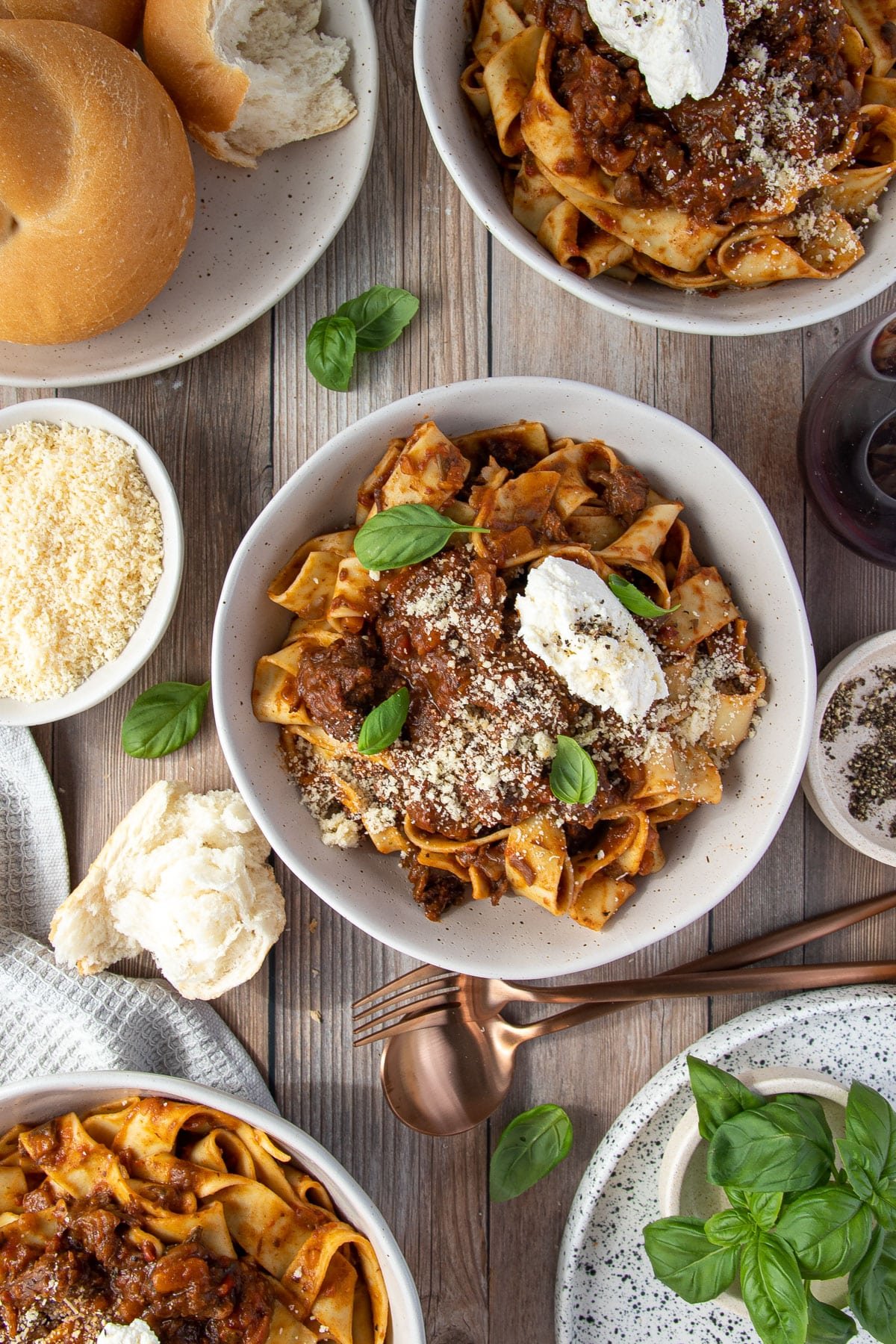
Why you’ll love this recipe
- So easy to make – only 20 minutes of hands-on time, then leave everything to simmer together in the slow cooker, pressure cooker or oven.
- Affordable – this recipe makes a cheaper cut of meat the hero. Normally tough, beef cheeks are cooked low and slow until they are fall-apart tender.
- Slow cooker, pressure cooker or conventional – make this recipe in a slow cooker, pressure cooker or Dutch oven.
- So comforting –the perfect cold weather recipe! It is hearty, cosy and the rich tomato and red wine gravy has so much flavour.
- Make ahead –leftovers taste even better the next day! It also freezes well, making it the perfect make-ahead meal.
Ingredients you will need
** This post contains tips and instructions to achieve the best possible results. The photo above is a great guide for when you are in the supermarket, but for full ingredient quantities and methods, please scroll down to the detailed recipe card below!
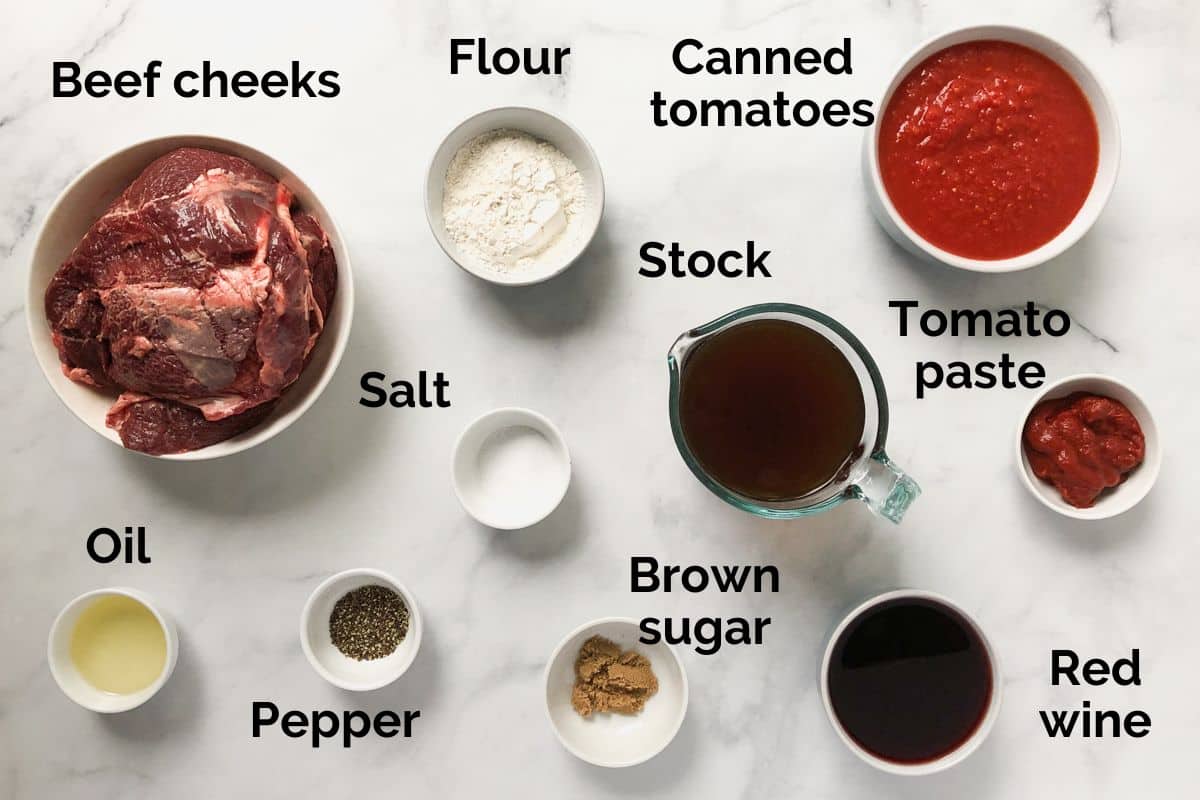
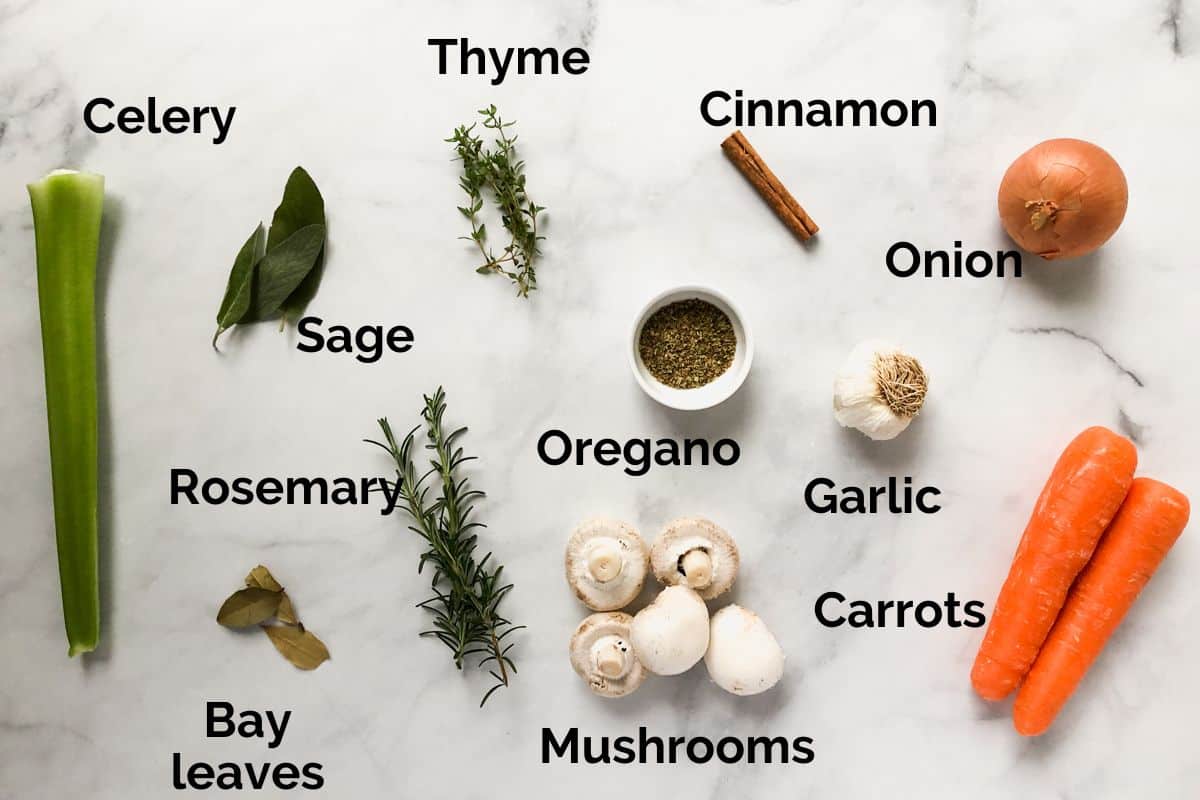
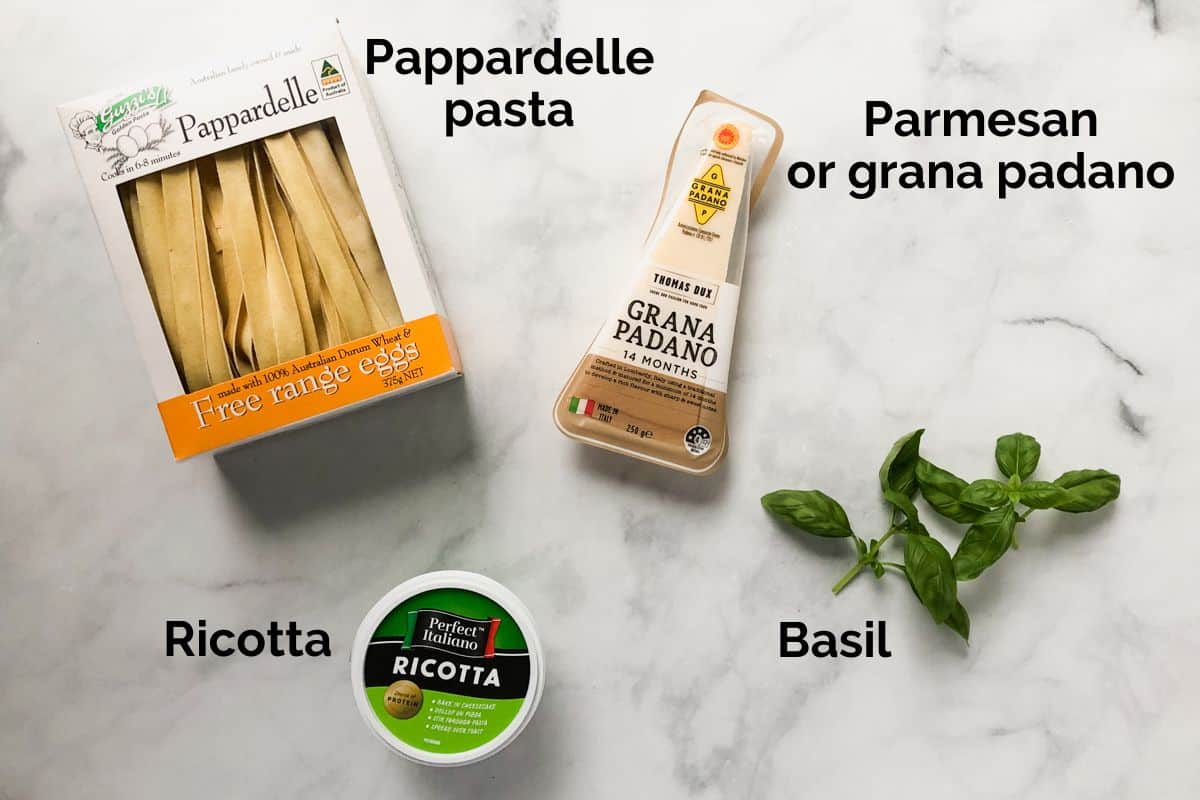
- Beef cheeks – are a cheaper, specialty cut of meat that can be found in supermarkets or at your local butcher. They are generally a tough and sinewy cut of meat, but when braised in liquid they become tender and succulent. If you can’t source beef cheeks, you can use any inexpensive braising or stewing steak like chuck steak, neck or shoulder cuts. They require a long, slow cooking time to become tender.
- Onion, celery and carrot – are sautéed together with a little olive oil and garlic to form the ‘il soffritto’; the vegetable flavour base of the sauce.
- Plain flour – coats the beef cheeks, along with salt and pepper. It is used for both flavour and to thicken the sauce as it cooks.
- Canned tomatoes – the base of the sauce. I recommend using canned pureed or chopped tomatoes with no added flavours. Passata can also be used.
- Brown sugar – to balance the sauce and the acidity of the tomatoes.
- Red wine – for ragu sauce, merlot, Shiraz or Cabernet Sauvignon are perfect. The deep, warm flavours add depth to the sauce. You won’t need a whole bottle for this recipe. But if you don’t want to serve the leftover wine with your meal, you can freeze it in an ice cube tray or in individual portions to cook with next time.
- Herbs – a mix of fresh and dried herbs are used to flavour the dish. I use fresh sage, thyme and rosemary along with dried oregano. But you can sub for dried herbs if this is what you have available. Some fresh basil and parsley can also be used for serving.
- Fresh parmesan cheese and ricotta cheese – for serving. I recommend grating your own fresh parmesan, grana padano or pecorino for best results.
- Pappardelle pasta – most pasta types will pair well with slow cooked beef cheeks, but my favourite is fresh pappardelle. Pappardelle are long, flat ribbons of egg pasta that can be found in most supermarkets, or you can make your own. Its thick, wide strands hold on to the thick sauce and meat perfectly. Alternatively, you can serve it with creamy mashed potatoes, crusty bread or polenta.
- Beef stock – try to use a high-quality beef stock or broth. Either store-bought or homemade is fine.
Step by step instructions
This ragu can be made in 3 different ways;
- Slow cooker,
- Pressure cooker (the fastest option but it still makes the meat super tender!) or;
- Stovetop and oven using a Dutch oven (or a frying pan and an alternate oven-safe dish)
All methods result in the same flavour and consistency, only the cooking times vary.
Step 1 – Sear the beef cheeks;
For all three methods, first the beef cheeks are coated in a mixture of flour, salt and pepper and seared until browned on all sides. *If you are using a slow cooker or pressure cooker, the beef can be seared directly in the pot, if you have a searing function available.
They are then placed on a plate to rest while the vegetables cook.
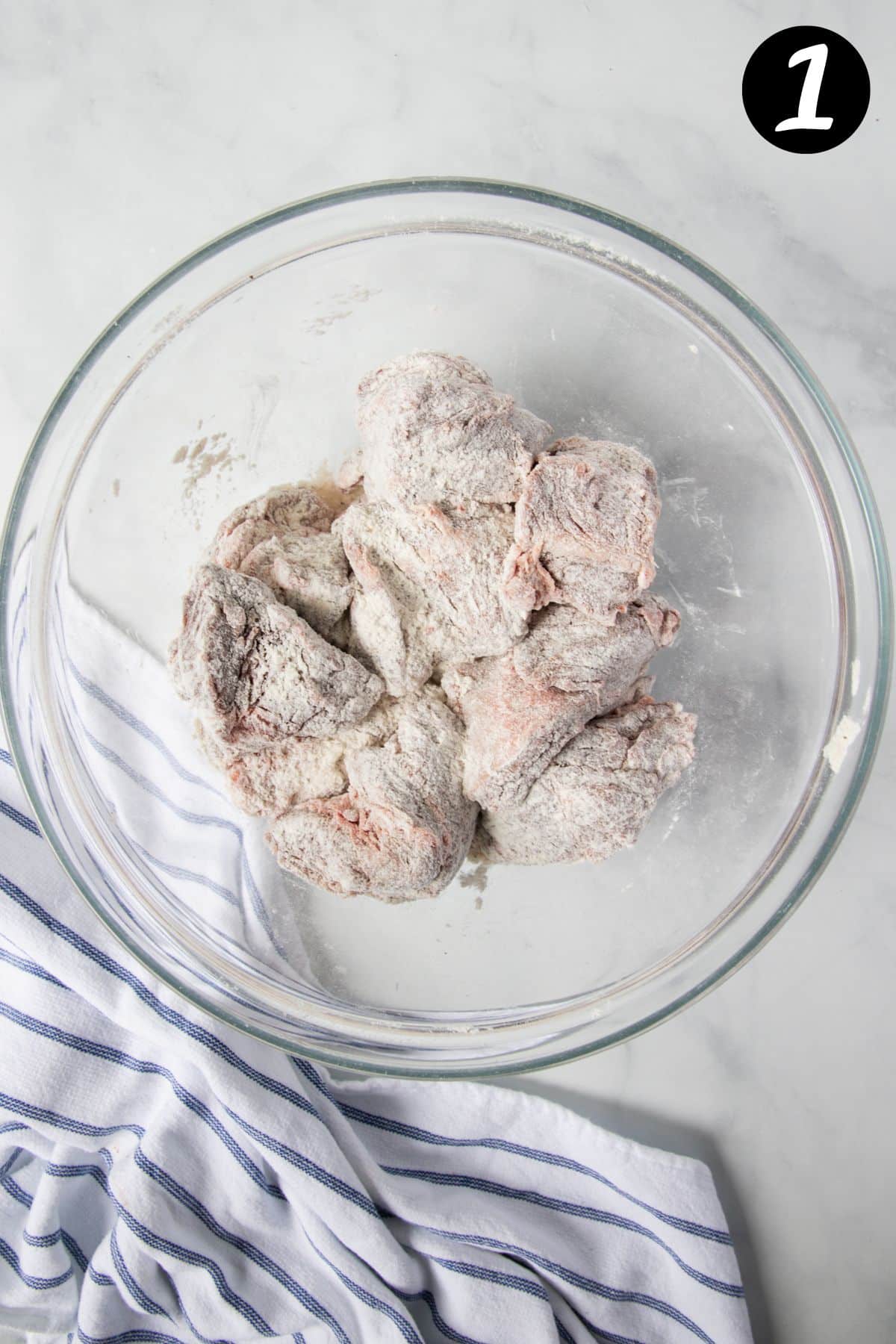
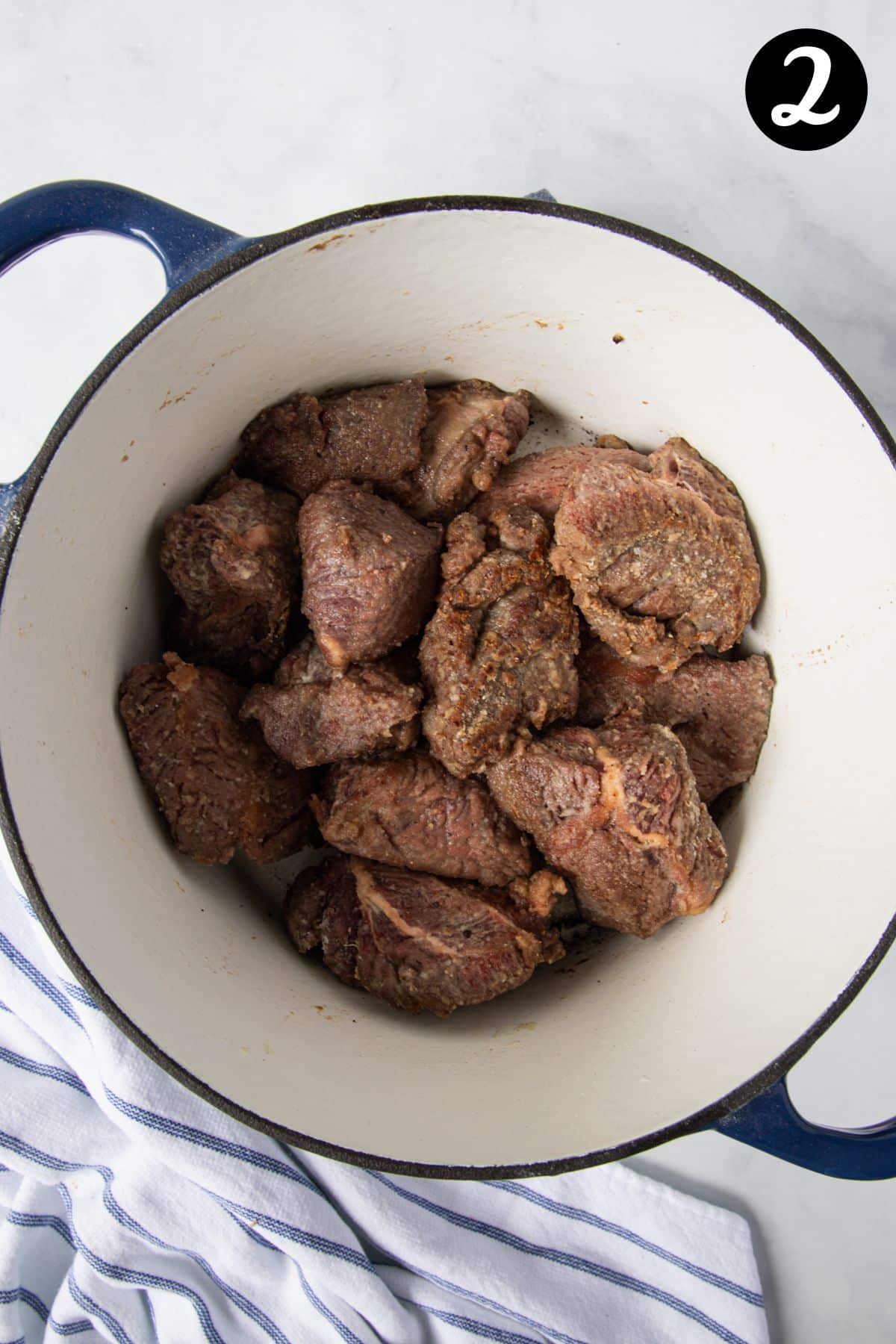
Step 2 – Sauté the vegetables.
The garlic, onion, celery and carrot are sautéed in a little olive oil until soft and fragrant.
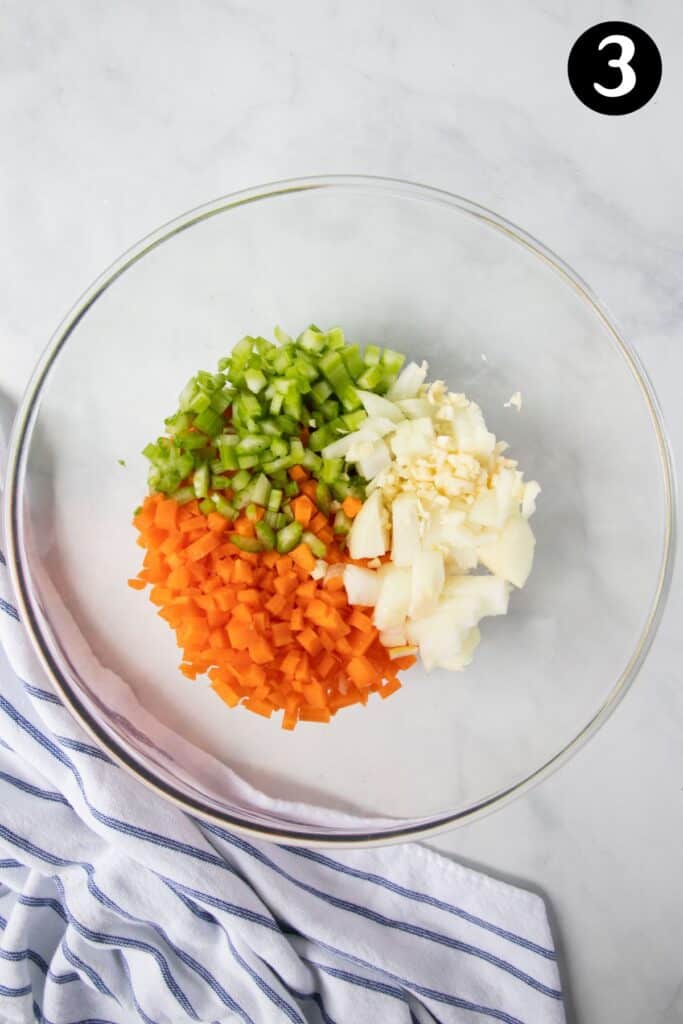
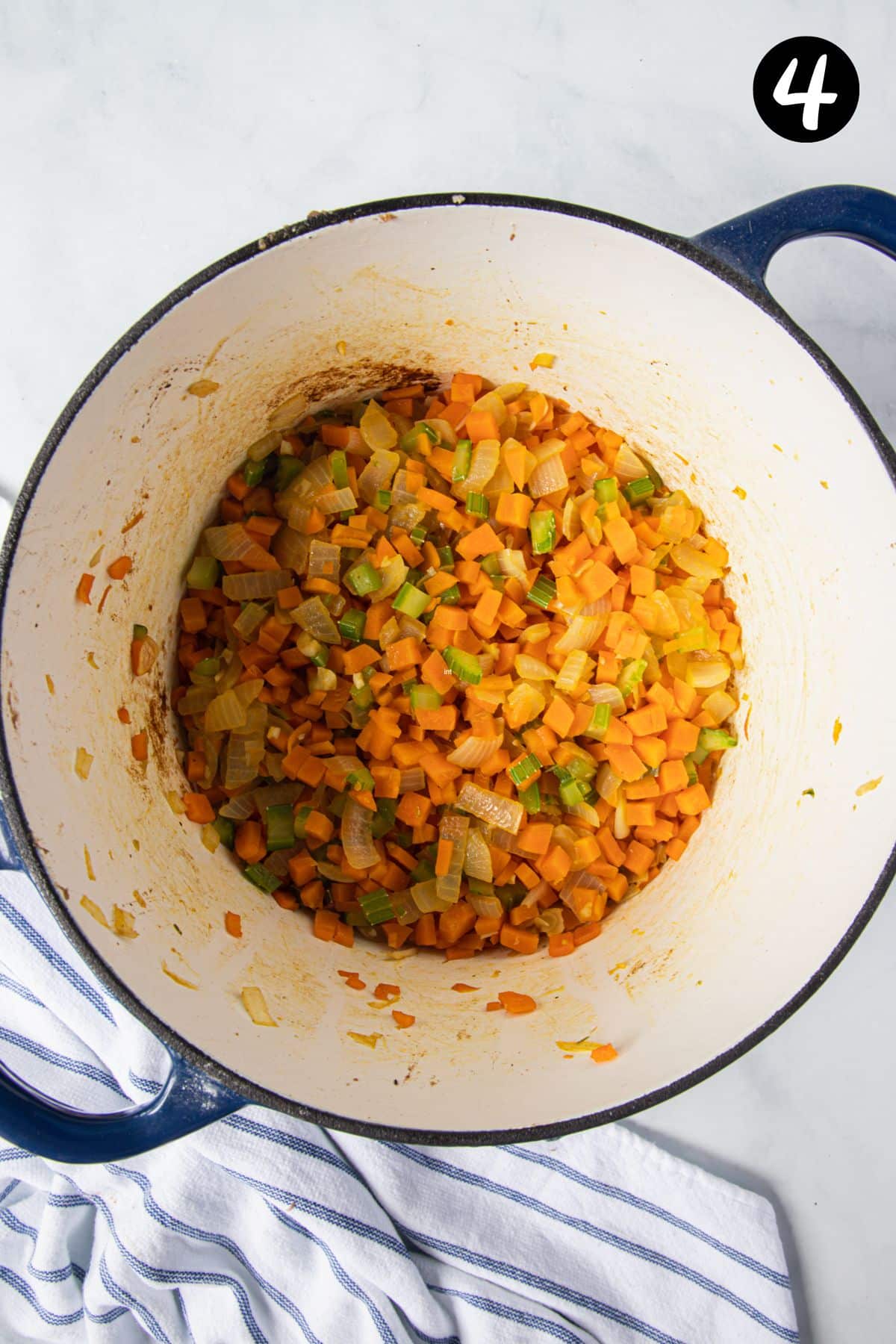
Stovetop and oven method;
Once the beef cheeks have been browned and the vegetables sautéed, everything is placed into a Dutch oven or casserole dish with a lid and slow cooked for around 3 ½ hours, until the beef is fall-apart tender.
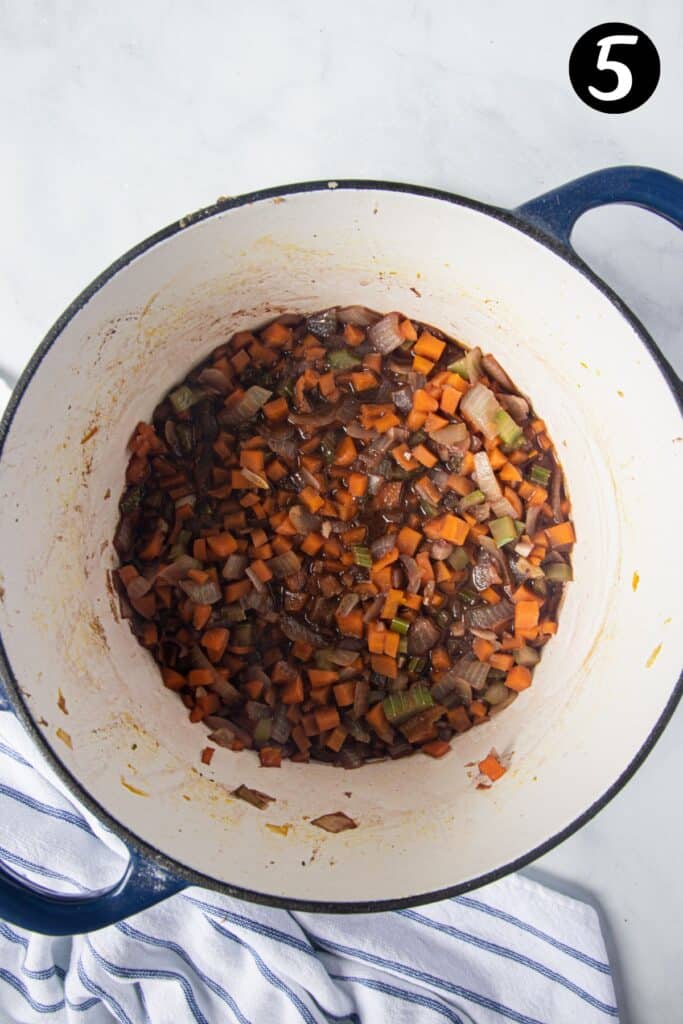
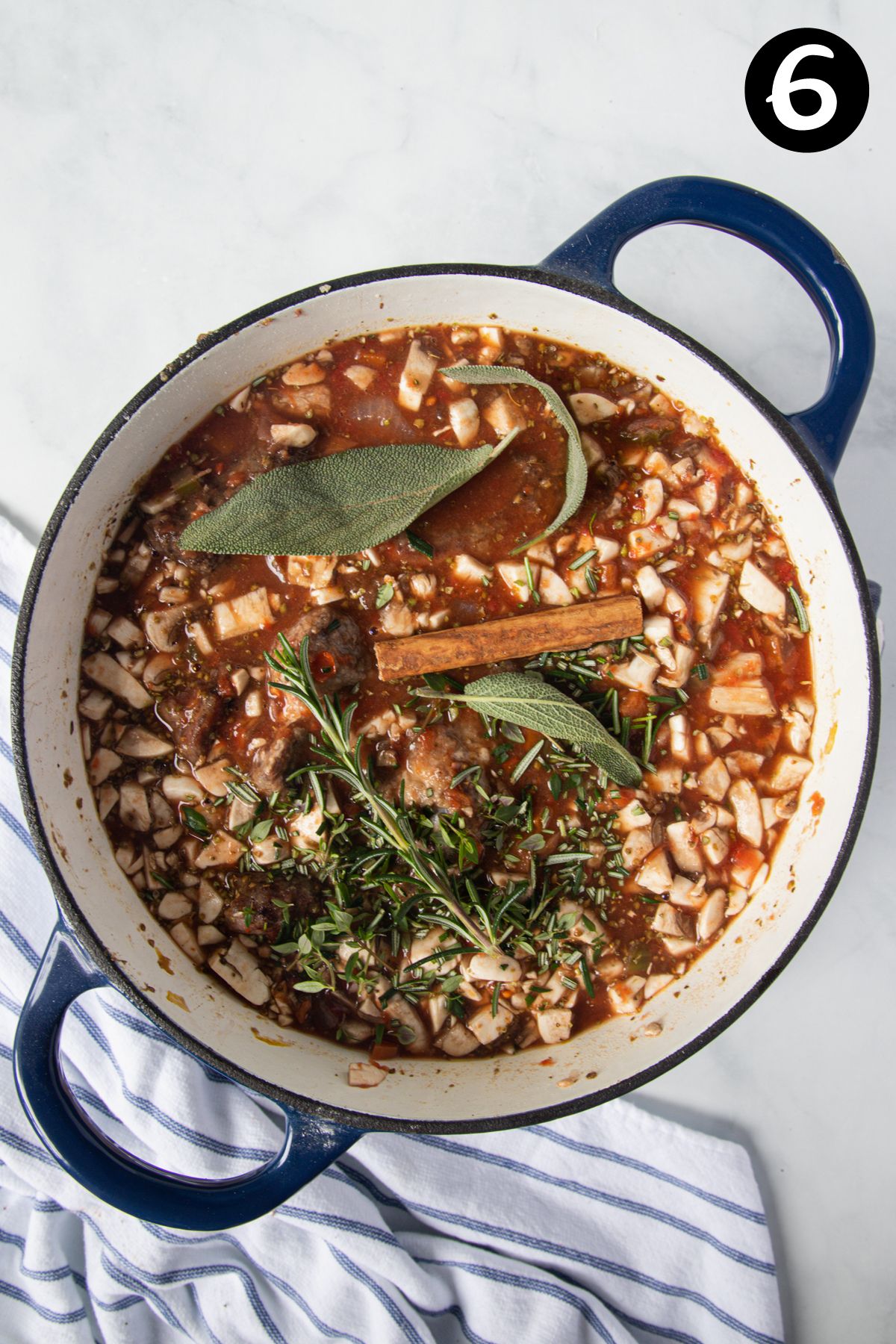
The beef cheeks are then removed from the pot and shredded with forks, before being stirred back through the sauce to serve.
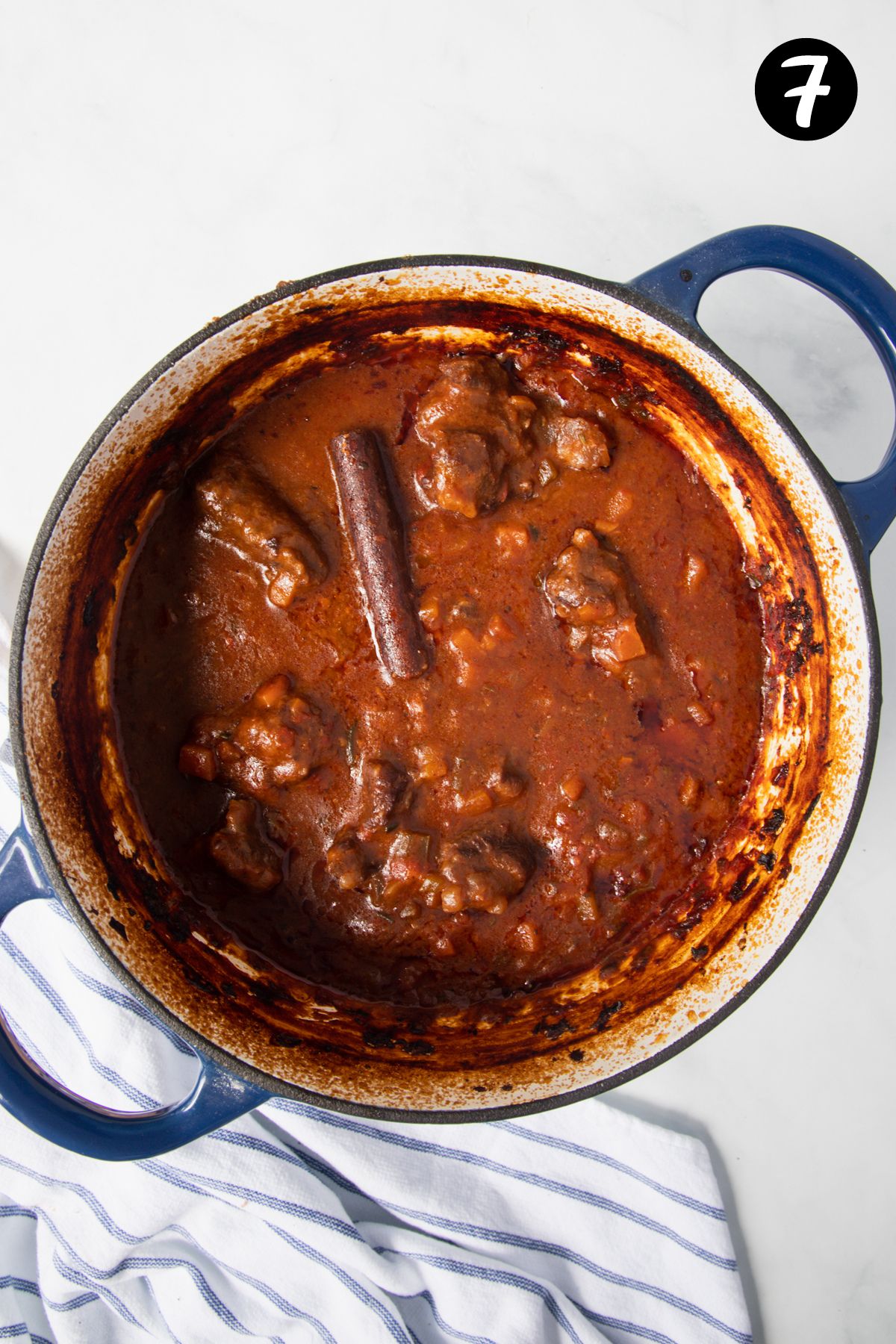
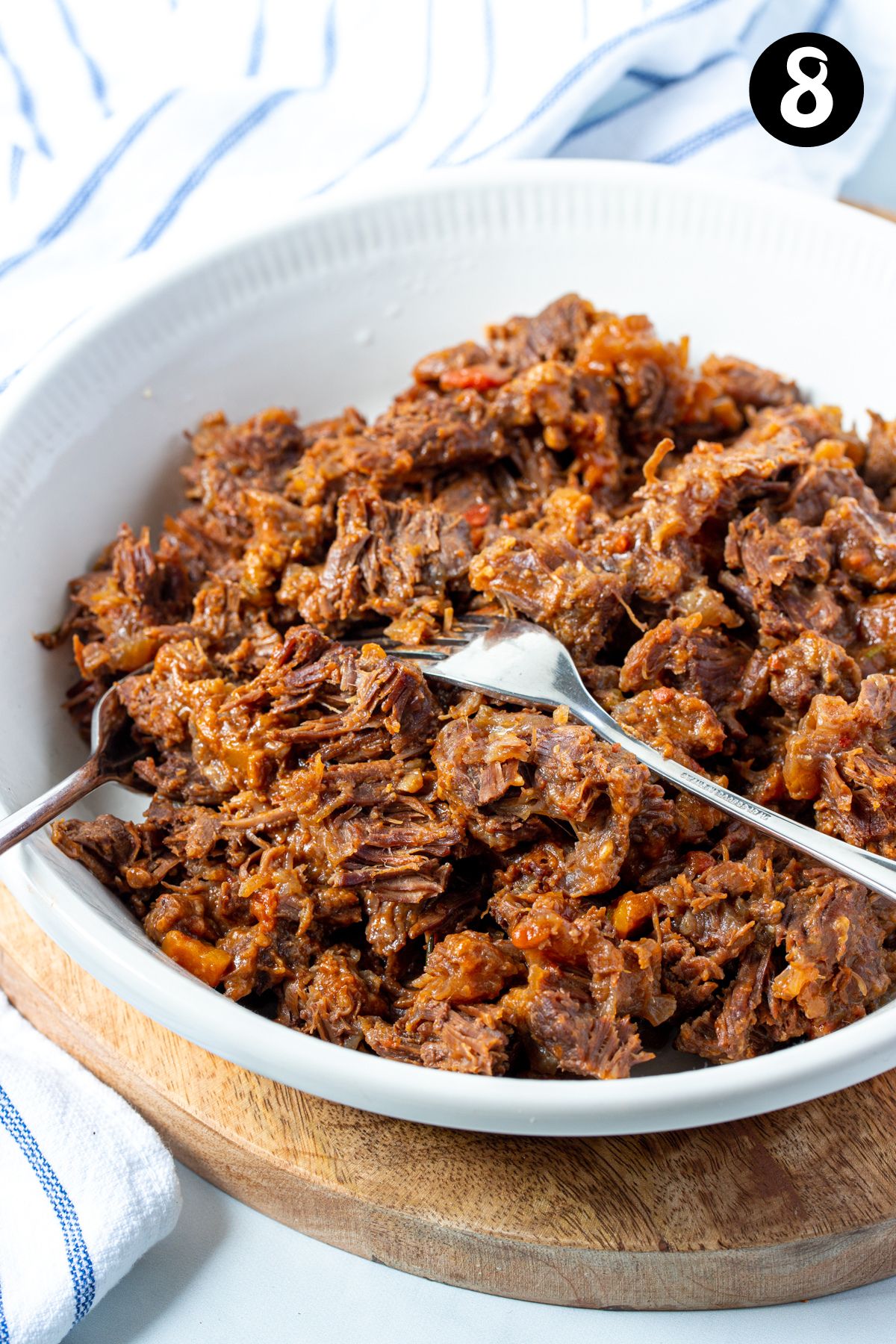
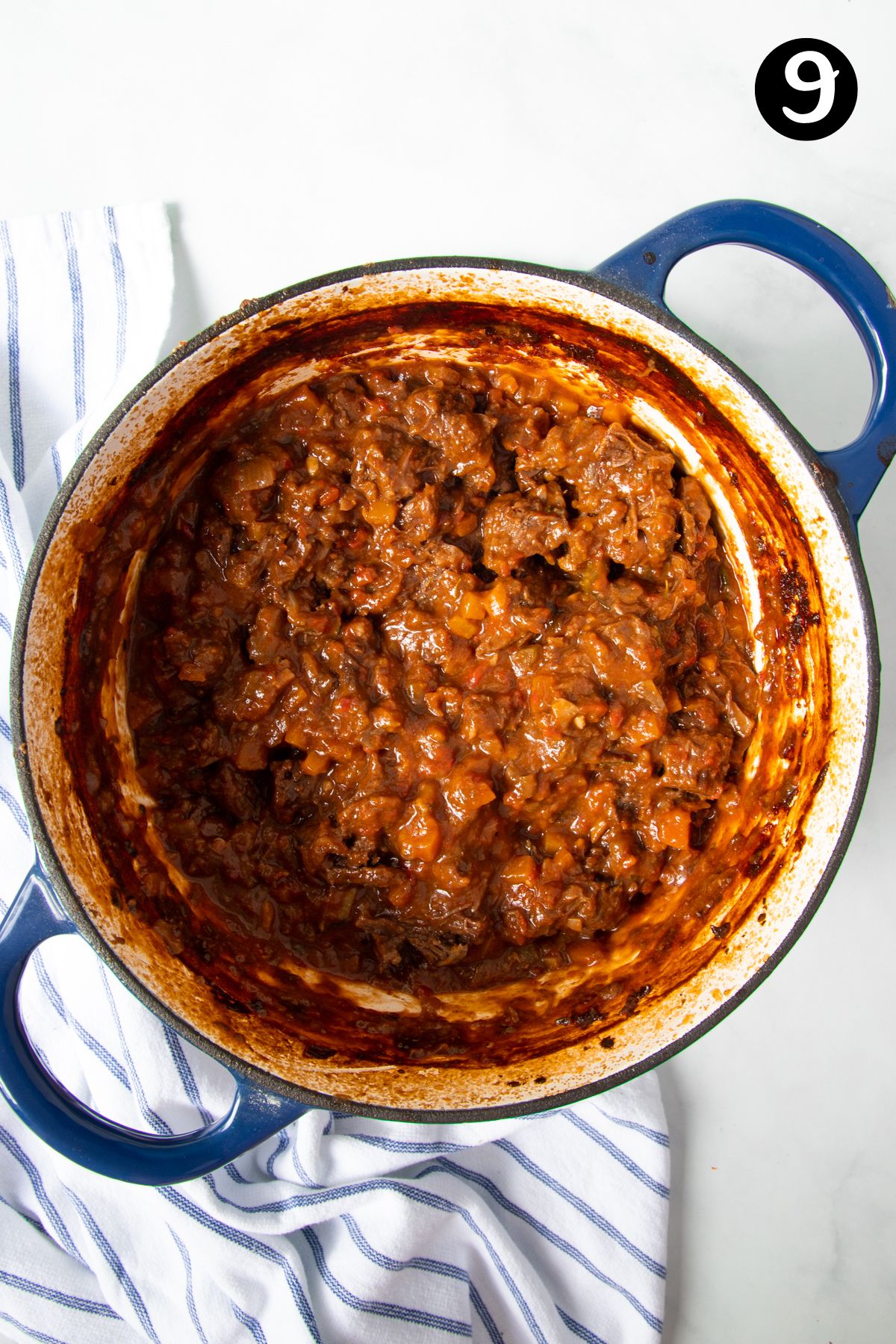
Slow cooker instructions;
Cooking the ragu low and slow is a great option for busy weeknights or cold, wintery days! Having dinner ready and waiting for you at the end of a long day is always appreciated.
Once the beef cheeks are browned and the vegetables sautéed, everything gets thrown into the slow cooker pot to slow cook (on low) for 8 hours.
Once cooked, the beef cheeks are pulled from the pot and shredded with two forks. They are then added back into the sauce before serving.
Pressure cooker instructions;
This is the fastest method, but the beef cheeks will still be fall-apart tender!
Once the beef cheeks are browned and the vegetables sautéed in the pressure cooker pot, everything gets placed into the pot and cook for 45 minutes.
Once cooked, the beef cheeks are pulled from the pot and shredded with two forks. They are then added back into the sauce before serving.
Expert tips
- Cut the beef cheeks to smaller, even-sized pieces to allow it to cook evenly.
- If you don’t have a ‘sear’ function on your slow cooker, the beef cheeks and the vegetables can be seared in a pan before adding everything to the slow cooker pot.
- If oven baking, be sure to use a Dutch oven or oven-proof casserole dish. The Dutch oven can be heated over the stovetop.
- Add more broth, if needed. If the liquid evaporates and the beef still needs a little more time to tenderise, add a little extra stock to the ragu and continue to cook.
- How to serve – serve beef ragu over your favourite base. Pasta, buttery mashed potatoes, creamy polenta or fresh, crusty bread are all great options. A good crusty bread works to mop up the thick sauce. To top, some fresh basil, lashings of fresh parmesan cheese and a glass of red wine are also recommended!
- The ragu can also be used as the meat filling to build a lasagne.
- Choose a red wine that is good enough to drink, rather than ‘cooking wine’. It doesn’t have to be expensive.
- If serving with pasta, reserve a little salted pasta water to toss the pasta and ragu together.
- Storage; store any leftover ragu in an airtight container in the fridge for 3-4 days.
- Taste at the end and season with salt and pepper, to if needed.
FAQs
Beef ragu freezes beautifully, making it a great make-ahead dinner for busy weeknights. To freeze, allow the ragu to cool and then place it into a freezer-safe container (either whole or in individual serves). Freeze for up to 3 months and thaw in the fridge or at room temperature before reheating.
You can use flour or cornflour/corn starch mixed with a little stock or water to thicken, if needed. Add the flour/cornflour slurry and simmer for a few minutes, until thickened.
Reheat in a saucepan over medium-low heat, stirring occasionally, until steaming hot all the way through. If the ragu is too thick, add an extra splash of beef stock. Re-season with salt and pepper, as needed.
As long as they remain covered in the sauce, the cheeks won’t dry out while cooking. So don’t worry if you leave them on a little longer than directed, provided you top the sauce up with a little stock if needed. The longer they are cooked, the softer they will be.
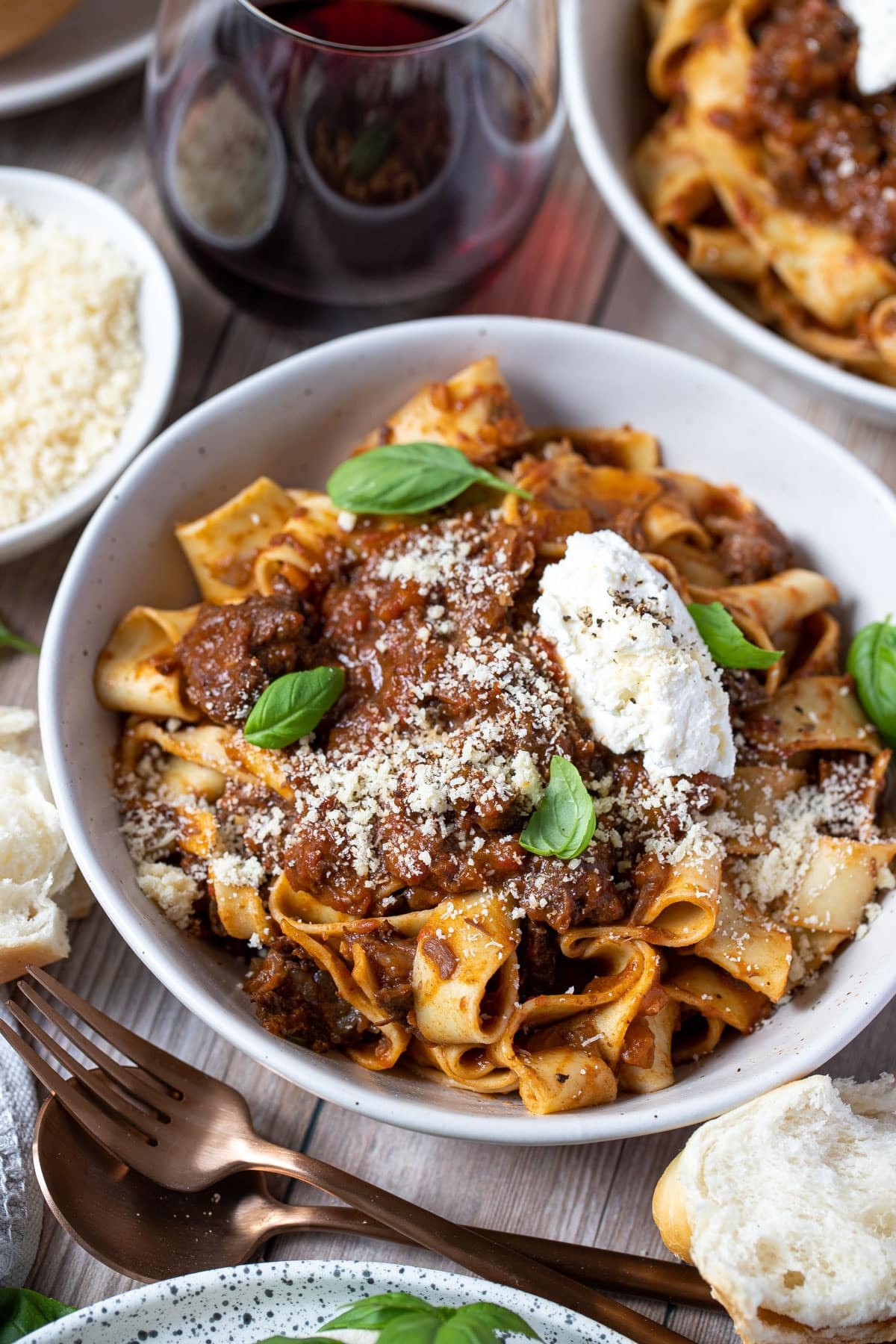
Related recipes
Tried this recipe? Please leave a star ⭐⭐⭐⭐⭐ rating or leave a review below and let you know how you went!
Hungry for more? Subscribe to my newsletter and follow along on Facebook, Instagram and Pinterest for the latest recipes and news.
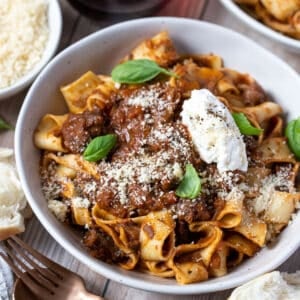
Beef Cheek Ragu (Slow Cooker or Oven)
Equipment
- Pressure cooker, slow cooker or Dutch oven
Ingredients
- 1.2 kilograms beef cheeks 2 large or 4 small, cut into smaller pieces (cut a 600 gram cheek into 4-5 pieces)
- ⅓ cup flour
- 1 teaspoon salt
- black pepper
- 3 tablespoons olive oil
- 5 cloves garlic chopped
- 1 brown onion chopped
- 2 carrots finely diced
- 1 celery stalk finely diced
For the ragu sauce
- 2 cups beef stock or chicken stock
- 1 cup red wine shiraz, Cabernet Sauvignon or merlot
- 2 cups canned tomatoes polpa, crushed tomatoes or passata
- 3 tablespoons tomato paste
- 1 teaspoon brown sugar
- 3 fresh sage leaves or dried sage (¼ tsp)
- 2 teaspoons fresh thyme
- 1 teaspoon fresh rosemary chopped
- 1 tablespoon dried oregano
- 1 cinnamon stick
- 1-2 bay leaf
- 5 mushrooms chopped
To serve
- 400 grams pappardelle pasta or mashed potatoes or polenta
- fresh basil chopped
- fresh parmesan or grana padano grated or shaved
- fresh ricotta cheese
Instructions
- If using an oven, pre-heat to 160°C/320 F.
- Cut the beef cheeks into smaller pieces and remove any tough membranes. Coat the pieces in the flour, salt and pepper and stir until they are completely coated.
- Heat 2 tablespoons of the olive oil in your Dutch oven, slow cooker or pressure cooker pot (or a frying pan) over high heat. Sear the beef cheeks on all sides, until browned. (You may need to do this in batches). Remove the beef cheeks from the pot and rest on a plate. Keep the excess flour from the beef cheeks to add to the sauce.
- Turn the heat down to medium and add the remaining olive oil. Add the garlic, onion, carrot and celery.
- Sauté the vegetables until soft (3 minutes).
- Add the wine and stir to deglaze the pot. Simmer for 1-2 minutes.
- Add the remaining ingredients (including the excess flour from the beef cheeks) to the pot and cover with the lid.
- Then, follow the directions below for your chosen cooking method:
Oven method
- Cook at 160°C for 3 ½ hours, or until the beef is fall-apart tender and able to be shredded with a fork. *Check the sauce once or twice throughout. If it has reduced and thickened but the beef needs more time, add a little more stock.
- Remove the beef cheeks from the sauce and shred them with two forks.
- Remove the cinnamon stick and bay leaf. Return the shredded beef cheeks to the sauce and taste. Season with extra salt and pepper, if needed. Serve with freshly cooked pasta, mashed potatoes or polenta, fresh basil, parmesan and a spoonful of ricotta.
Pressure Cooker Method
- Secure the lid and select the ‘meat/poultry' or 'stew’ mode for 45 minutes. Allow time for the pressure to build before the cooker starts.
- Once the cooker is finished, carefully release the pressure and remove the lid.
- Remove the beef cheeks from the sauce and shred them with two forks.
- Remove the cinnamon stick and bay leaf. Return the shredded beef cheeks to the sauce and taste. Season with extra salt and pepper, if needed. Serve with freshly cooked pasta, mashed potatoes or polenta, fresh basil, parmesan and a spoonful of ricotta.
Slow Cooker Method
- Slow cook the beef cheeks on 'low' setting until they are fall apart tender (around 8 hours).
- Remove the beef cheeks from the sauce and shred them with two forks.
- Remove the cinnamon stick and bay leaf. Return the shredded beef cheeks to the sauce and taste. Season with extra salt and pepper, if needed. Serve with freshly cooked pasta, mashed potatoes or polenta, fresh basil, parmesan and a spoonful of ricotta.
Notes
- Red wine – for ragu sauce, merlot, Shiraz or Cabernet Sauvignon are perfect. The deep, warm flavours add depth to the sauce. You won’t need a whole bottle for this recipe. But if you don’t want to serve the leftover wine with your meal, you can freeze it in an ice cube tray or in individual portions to cook with next time.
- Cut the beef cheeks to smaller, even-sized pieces to allow it to cook evenly.
- If oven baking, be sure to use a Dutch oven or oven-proof casserole dish. The Dutch oven can be heated over the stovetop.
- If you don’t have a ‘sear’ function on your slow cooker, the beef cheeks and the vegetables can be seared in a pan before adding everything to the slow cooker pot.
- Add more broth, if needed. If the liquid evaporates and the beef still needs a little more time to tenderise, add a little extra stock to the ragu and continue to cook.
- How to serve – serve beef ragu over your favourite base. Pasta, buttery mashed potatoes, creamy polenta or fresh, crusty bread are all great options. A good crusty bread works to mop up the thick sauce. To top, some fresh basil, lashings of fresh parmesan cheese and a glass of red wine are also recommended!
- The ragu can also be used to build a lasagne.
- Choose a red wine that is good enough to drink, rather than ‘cooking wine’. It doesn’t have to be expensive.
- If serving with pasta, reserve a little salted pasta water to toss the pasta and ragu together.
- Storage; store any leftover ragu in an airtight container in the fridge for 3-4 days.
- Taste at the end and season with salt and pepper, to taste.
- To freeze; allow the ragu to cool and then place it into a freezer-safe container (either whole or in individual serves). Freeze for up to 3 months and thaw in the fridge or at room temperature before reheating.
- How to thicken beef ragu; You can use flour or cornflour/corn starch mixed with a little stock or water to thicken, if needed. Add the flour/cornflour slurry and simmer for a few minutes, until thickened.
- To reheat; Reheat in a saucepan over medium-low heat, stirring occasionally, until steaming hot all the way through. If the ragu is too thick, add an extra splash of beef stock. Re-season with salt and pepper, as needed.
- Please note that the nutrition information is based on the ragu being divided into 8 bowls along with fresh pappardelle pasta, with one bowl being one serve. The nutritional information is an estimate only and does not take into account any additional toppings or sides served with the ragu. The nutrition values will vary if you swap the pasta for mashed potatoes or polenta.
- This recipe is made using Australian cups and spoon measurements. Due to cup sizes varying from country to country, I advise adjusting if necessary.
Nutrition
Are you following us on Facebook, Instagram and Pinterest?
Update Notes: This recipe was originally published in April 2019, but was re-published with new information and photos in August 2022.


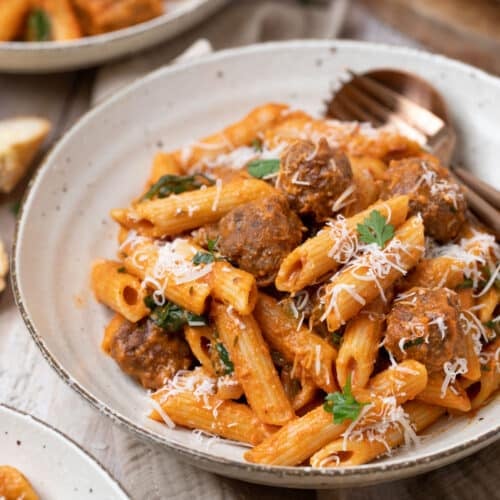
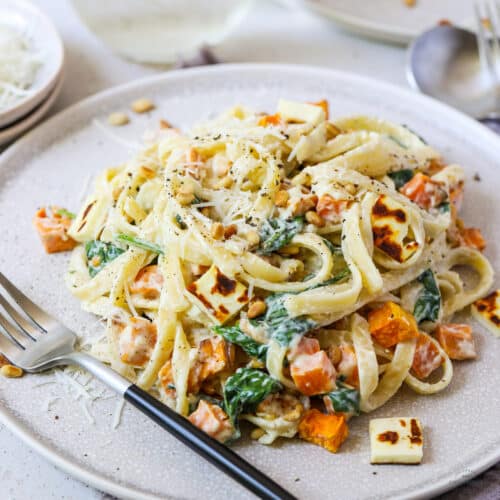
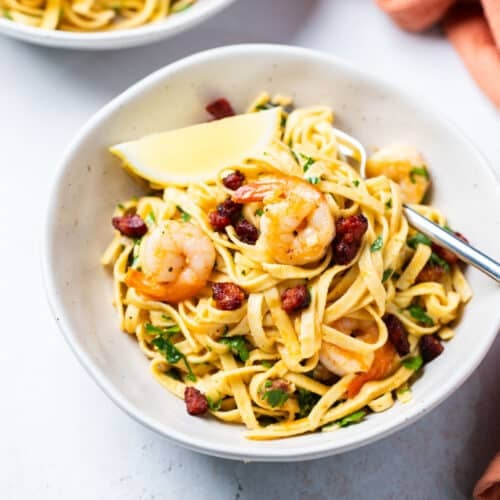
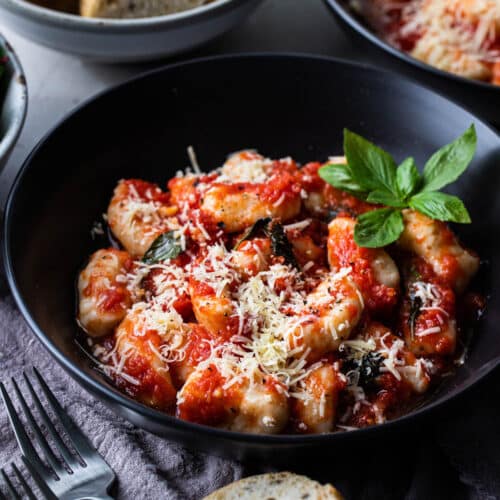

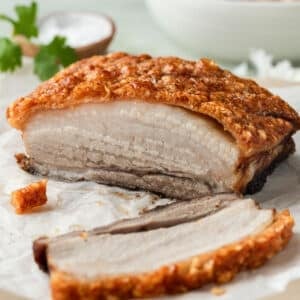

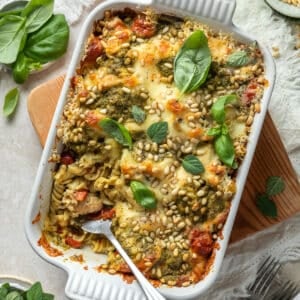
Gregory Park says
Hi Andrea,
Thank you so much for the recipe! My wife and I took this camping up in the mountains. An easy, hearty reheat and eat dish!
The only thing I would cut back on is the cinnamon. My wife and I both felt it was a little overpowering vs just a hint of something in the background. But the flavors and richness were great. Next time I make this I’ll try either just putting a dash of cinnamon vs a whole stick, or take the stick out after an hour in the crock pot…or perhaps substitute with nutmeg?
Andrea Geddes says
Hi Gregory! Thanks for taking the time to comment, I’m so happy that you enjoyed it. What a great camping recipe! Andrea 🙂
Andy says
I made this with the instantpot and it turned out incredible. The only adjustments I had to make were beef shin instead of cheeks (they didn’t have it) and pappardelle pasta is apparently rare around these parts, I used mafaldine which is quite close just a little frillier, you could use tagliatelle with no problems.
Great recipe full of flavour and easy to make.
Andrea Geddes says
Hi Andy! I’m so happy to hear that you enjoyed the ragu. It’s great to know that beef shins worked well for you in place of the cheeks. Thanks for taking the time to let me know! Andrea.
Luke says
This looks delicious! My wife is coeliac so I can’t use plain flour. I would use a cornflour slurry to thicken the sauce, but would you suggest coating the beef in cornflour as well, or should I use a gluten free flour?
Andrea Geddes says
Hi Luke! You can definitely use cornflour or your preferred gluten-free flour of choice to coat the beef. And cornflour will work perfectly to thicken the sauce to your liking at the end. I hope you enjoy it! Andrea.
Kim says
Hi I have cooked the ragu in a Dutch oven and it is just delicious but the sauce has burnt all around the edge and has reduced by at least half.. Have I done something wrong or is there a way of stopping this from happening… I put a damp Layer of baking paper over the sauce before I put the lid on…
Andrea Geddes says
Hi Kim! I’m so happy that you love the flavours in the ragu. If you decide to make it again, I would suggest checking the sauce once or twice while it’s cooking and adding a little more stock if needed (if the sauce has reduced and thickened but the beef needs more time). It could also be a temperature issue- a lot of ovens can run hotter and this could cause the sauce to catch on the edges. But a little extra stock should help, if needed. I hope that helps and thanks for trying this recipe! Andrea 🙂
Jane says
I made the pressure cooker version and it was amazing! My children who don’t usually like casseroles loved this dish. I used cauliflower in place of the mushrooms and served the ragu with mashed potato and green beans, divine!
Andrea Geddes says
Hi Jane! I’m so happy to hear that you and your family loved this recipe. It’s one of my favourites over winter! Especially with green beans and mash. Yum! Thanks for taking the time to let me know. Andrea 🙂
Sylvie says
What a perfect recipe, I’m drooling over the photos! This dish would make such a great mid week dinner that is both comforting and packed with flavours. Delicious!!
Andrea Geddes says
Thanks Sylvie! It’s the perfect dish for a cold day.
Sarah says
This looks like the perfect dish now that winter has arrived, hearty, rich and warming. Also love the set and forget aspect of the slowcooker! Beats running around cooking at the end of the day with hungry kids!
Andrea Geddes says
Thanks Sarah! Slow cookers are a lifesaver on busy days!
Sally says
This looks like the perfect hearty meal for the upcoming cooler months! Love how quick the pressure cooker can make a normally long process without compromising on the tenderness of the meat!
Andrea Geddes says
Hi Sally! I think my pressure cooker is my favourite kitchen appliance. Super delicious and tender meals in no time!
Alex says
I love hearty dishes that are full of flavour – especially as the weather starts to cool down in Australia. I love an excuse to get the slow cooker out too – SO delicious!
Andrea Geddes says
Hi Alex! I love slow and pressure cooker meals over winter. They are so easy!